Yanmar's Recommends “Mitsunae” Dense Seedling Technology
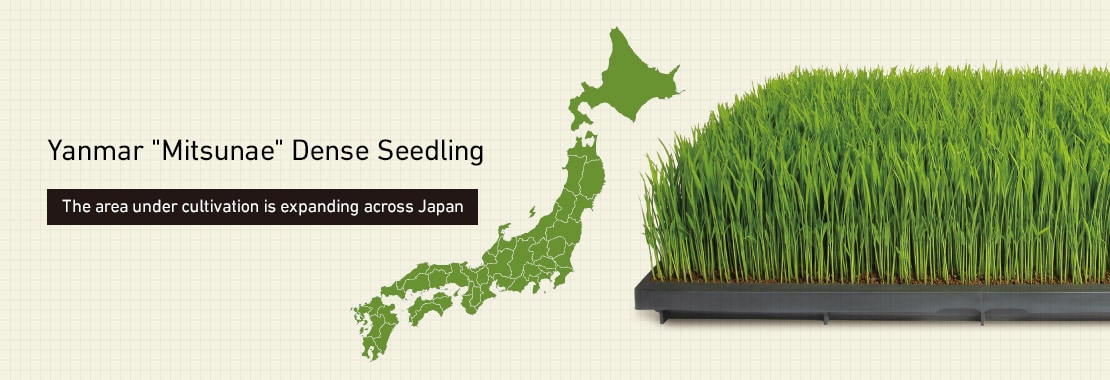
Yanmar's "Mitsunae" dense seedling technology is a cultivating technology that allows farmers to reduce costs and labor in rice farming.
As cultivation management does not significantly differ from standard farming techniques, and it can be implemented in any region and at any scale, and is gaining tremendous attention among rice farmers throughout Japan.
Not only does the cultivation management not differ from standard cultivation techniques, but the final yield, and product quality are the same as well.
And yet, "Mitsunae" reduces costs related to seeding and nursing seedlings thanks to the smaller number of seed trays used, the reduction of time and intensity of the labor required for transportation, space savings in greenhouses and more.
We recommend Yanmar’s "Mitsunae" technology to everyone who has given up rice farming because of the low profitability, making farming only affordable with economies of scale, and those who want to reduce the labor involved with the supply of seedlings.
What is "Mitsunae"
"Mitsunae" dense seedling technology is a technique to reduce labor, costs, and effort by sowing between 250 and 300 grams (between 312 and 375 grams for sprouts), where you would normally only sow between 100 and 150 grams (between 125 and 187 grams for sprouts).
The industrialization and technological advancement of farming has allowed for large scale reduction of the effort involved. However, this increase in scale has not translated to large-scale reductions in the effort involved, and innovation in both tools and practices has long been awaited.
Epochal projects such as "changing Japan's rice farming" have also been implemented. This is the case with "Mitsunae" dense seedling technology. Research and experimentation has been performed by producers, researchers, and Yanmar. Interest in "Mitsunae" is now spreading throughout the country.
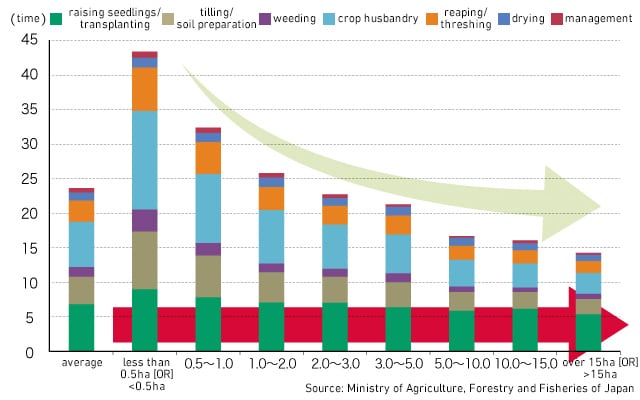
- ※Source: Ministry of Agriculture, Forestry and Fisheries of Japan, 2016 Rice Production Cost Analysis
Labor-savings and cost reduction with "Mitsunae"
"Mitsunae" does not require difficult techniques or specialized knowledge. Cultivation management does not significantly differ from standard farming techniques, and it can be implemented in any region and at any scale, without any change in yield.
The most prominent characteristic of "Mitsunae" is the reduction in the number of seed trays. As the required surface area of the trays is reduced together with the number of seed trays themselves, the cost involved with trays and soil is reduced. The time required for sowing and transportation of the seedlings is also cut, with labor costs and actual effort required to handle the seedlings similarly reduced.
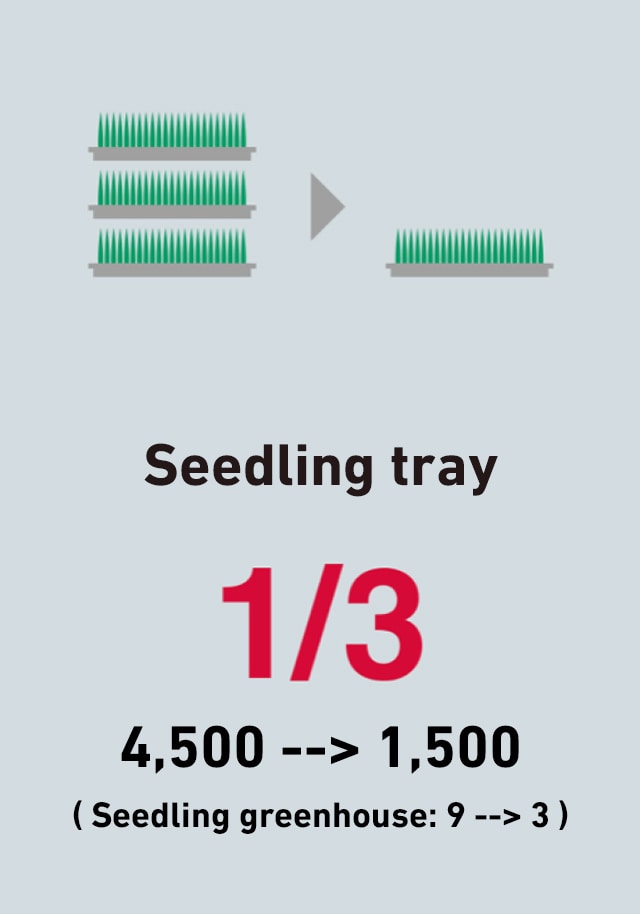
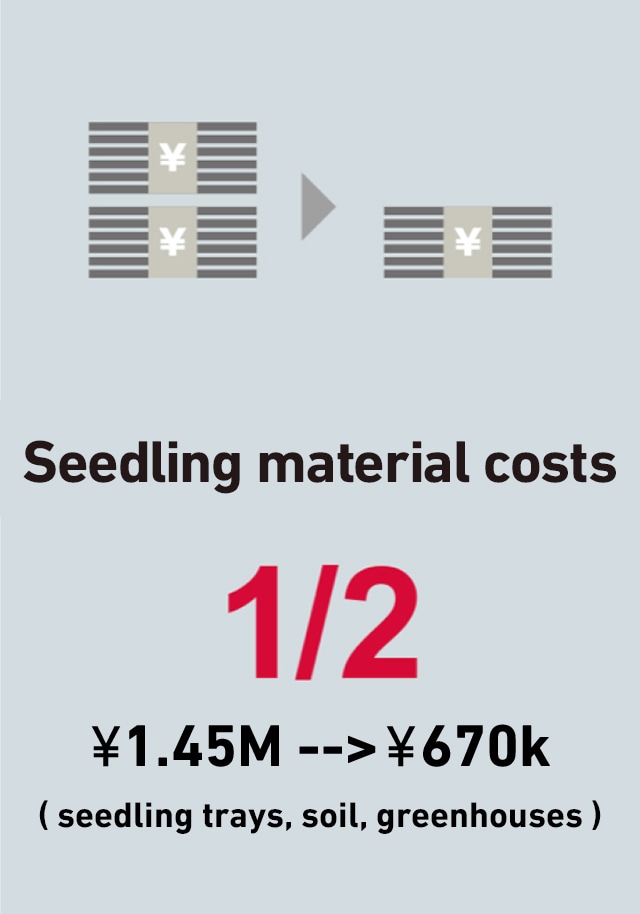
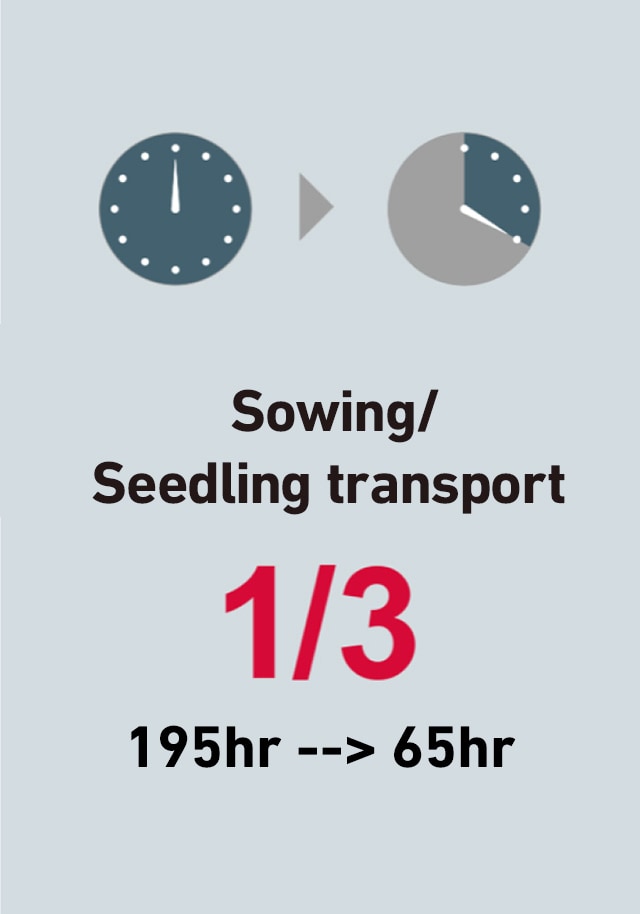
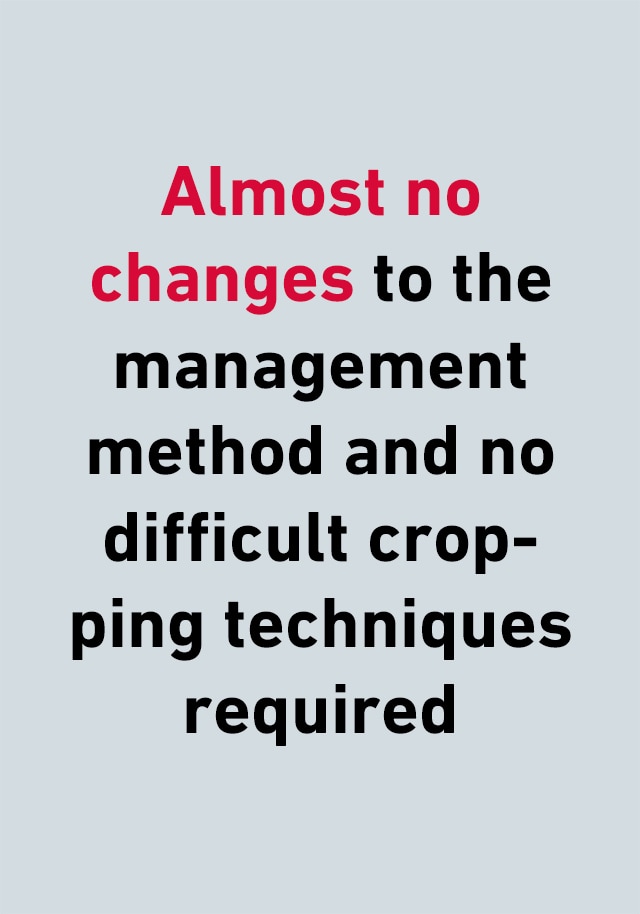
Greenhouses space cut to one third Difficult labor greatly reduced.
- ※We calculate that on a 30ha rice farm, standard cultivation techniques use 100g per tray, while "Mitsunae" uses 300g per tray.
Yanmar's "Mitsunae" is a technology to sow a lot and reap more efficiently.
"Mitsunae" is a sowing technique. Where you would normally use between 100 and 150 grams (between 125 and 187 grams for sprouts), at an increased concentration of between 250 and 300 grams (between 312 and 375 grams for sprouts) can be sown in each seed tray. Furthermore, thanks to Yanmar's exclusive technology, it is possible to pick between and three and five seedlings at a time, obtaining as efficient of a transplant as with standard cultivation methods.


It can also be implemented with traditional cultivation techniques.
Just by changing the cross feed and the vertical picking rate, it can also be used for plots farmed with standard transplantation techniques, so it will be useful for those who want to implement "Mitsunae" gradually.
(Traditional method with more than 120g of dry seeds per seed tray)
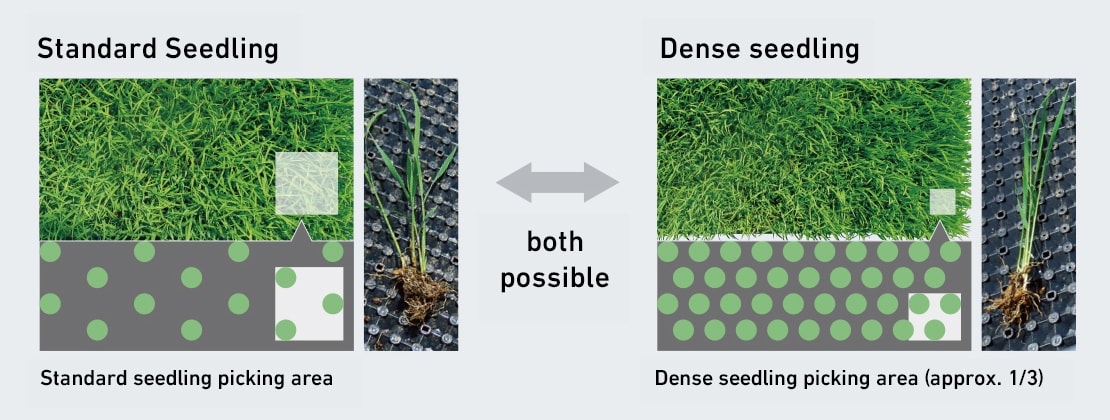
- ※1For Koshihikari rice
- ※2Depending on seedlings and fields.
To best implement "Mitsunae", narrow arm machines are ideal. Make sure to choose ""Mitsunae" ready" rice transplanters
Rice transplanters that have been developed for "Mitsunae" can precisely transplant rice the right amount of rice seedlings from the densely packed seed trays. When using normal machines to implement "Mitsunae", the number of seedlings per planting will be too many and planted at too shallow a depth. Utilizing the correct planting equipment will ensure that the right planting density is achieved, to maximize yields.
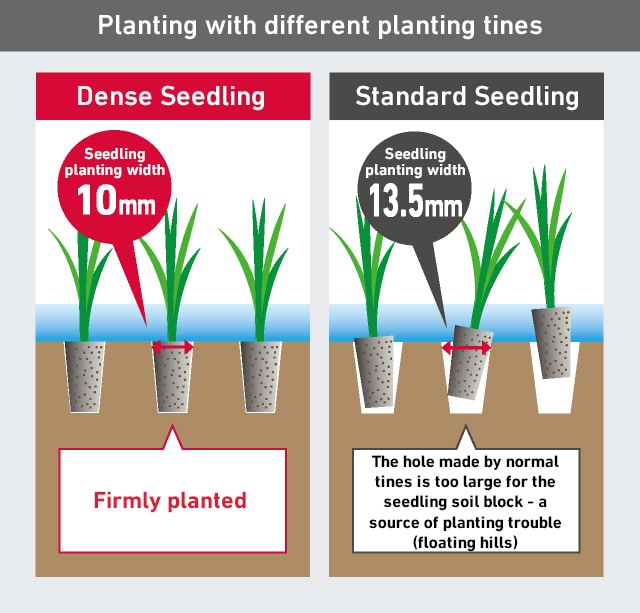
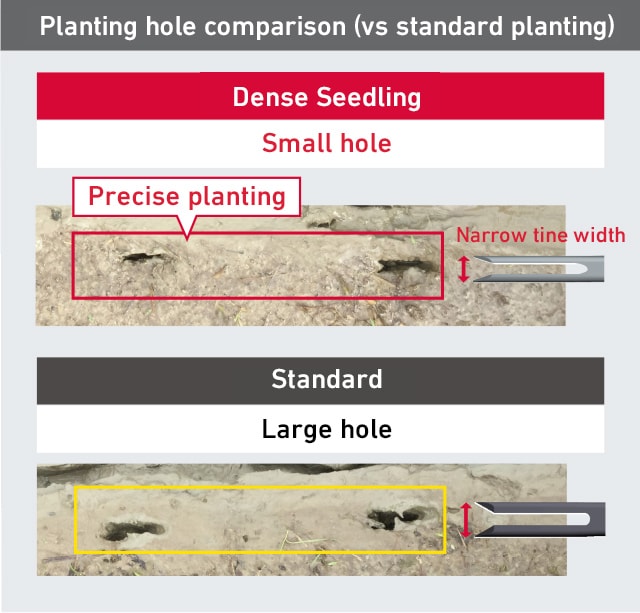
And as Yanmar's YR-D transplanter series implements the world's first assistant technology, even people with little experience in maneuvering rice transplanters can obtain great results.
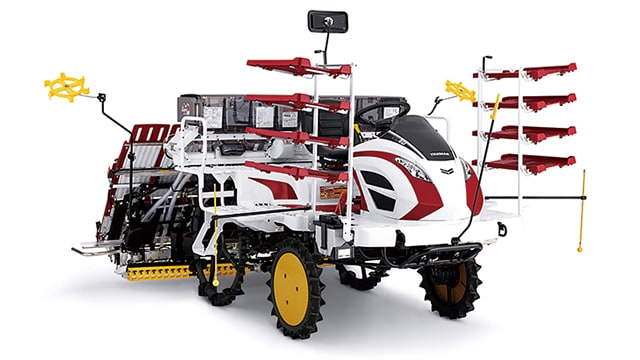
YR-D Series
- Everyone can become an "expert in rice transplantation"
- Maneuvering is simple and easy
- Helps to reduce labor and costs
- Pride of ownership
Winner of the "Emerging Agriculture Technologies 2016" and "2017 yearly development special category" awards.
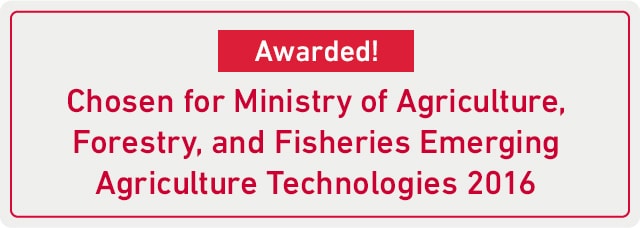
In December 2013 it was widely publicized in the Ministry of Agriculture, Forestry, and Fisheries "Development, preservation, and diffusion of new products and technologies" as a technology whose results are to be greatly anticipated. "Mitsunae" was chosen as a greatly anticipated technology by the "Emerging Agriculture Technologies 2016"
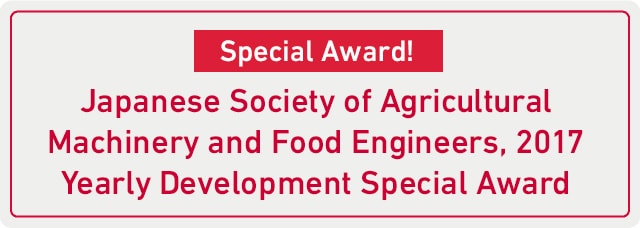
The "Japanese Society of Agricultural Machinery and Food Engineers development award" is awarded by the JSAM to companies or organizations whose products or technologies have positively influenced the progress of agricultural machinery or food engineering. 2017 Yearly Development Special Award was given for "The innovative reduction of costs and labor brought on by "Mitsunae" and the assistant technology", towards increasing the profitability of farming.
- ※"Mitsunae" Transplantation system has been developed with the joint research efforts of "Farming Organization Agristar Onaga", "Butta Nosan Inc.", "Ishikawa Prefecture General Agricultural Research Center" and "Yanmar Inc."
- ※Part of the technology was implemented thanks to "Expansion of innovative technology for the realization of agriculture, forestry and fishery industry " (Smart field model as demonstrated by agricultural organizations: A fusion of IT agricultural machines, field sensors, farm management visualization, and skill succession systems, demonstrating the development of large scale agricultural efforts)

 Agriculture
Agriculture
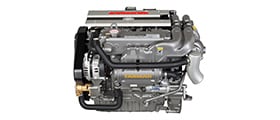 Recreational Marine
Recreational Marine
 Recreational Boat
Recreational Boat
 Premium Cruiser
Premium Cruiser
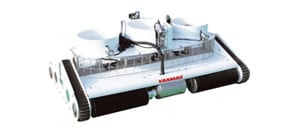 Marine Equipment
Marine Equipment
 Marine Commercial
Marine Commercial
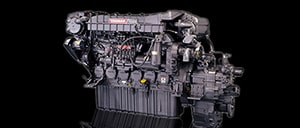 Propulsion Engines (High Speed)
Propulsion Engines (High Speed)
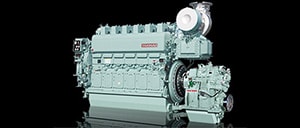 Propulsion Engines (Medium Speed)
Propulsion Engines (Medium Speed)
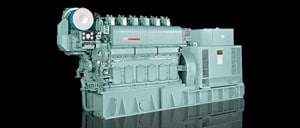 Auxiliary Engines
Auxiliary Engines
 SCR System
SCR System
 Dual Fuel Engine
Dual Fuel Engine
 Two-stage Turbocharging System
Two-stage Turbocharging System
 Electric Propulsion System
Electric Propulsion System
 Energy Systems
Energy Systems
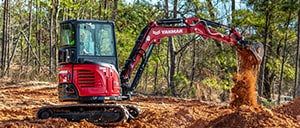 Compact Equipment
Compact Equipment
 Industrial Engine
Industrial Engine
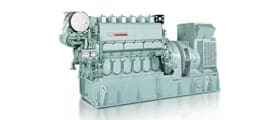 Power Generation
Power Generation
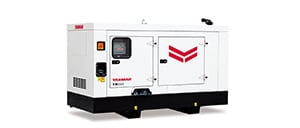 Compact Power Products
Compact Power Products